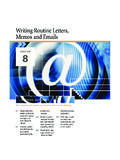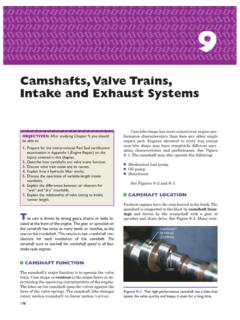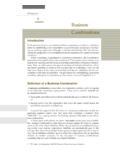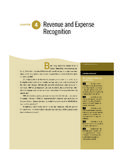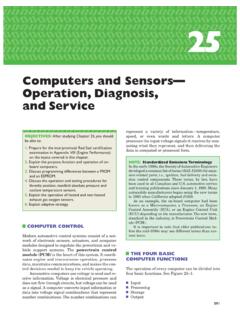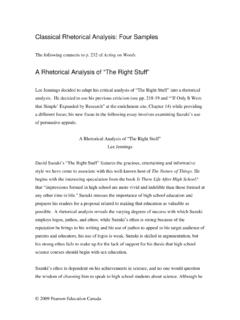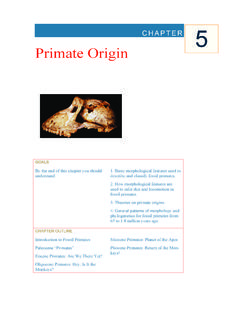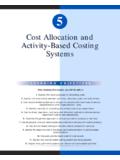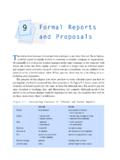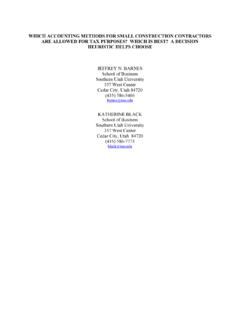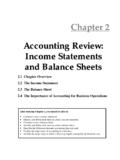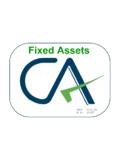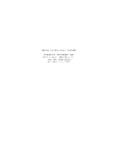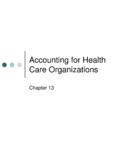Transcription of ACCOUNTING - Pearson
1 Basic AccountingSupplement for Using Simply ACCOUNTING Version for WindowsbyM. Purbhoo and D. PurbhooBasic ACCOUNTING Supplement for Using Simply ACCOUNTING Version 8 Page 2 of 13 Purbhoo & PurbhooBasic AccountingContents: ACCOUNTING Theory 3 Basic ACCOUNTING 3 Balance Sheet 3 Income Statement 4 Debits and Credits 5 Journal Entries 6 Ledgers 6 Trial Balance 8 Audit Trail 9 Generally Accepted ACCOUNTING Principles (GAAP) 9 Summary: ACCOUNTING Transactions 13 Basic ACCOUNTING Supplement for Using Simply ACCOUNTING Version 8 Page 3 of 13 Purbhoo & PurbhooACCOUNTING THEORYB asic AccountingAccounting is a systematic method (it follows rules) of recording the economic transactions of abusiness so that the information can be used by both insiders (owners and managers) andoutsiders (investors, suppliers and creditors) to make financial information is generally summarized in two statements, the Balance Sheet and theIncome Statement.
2 The Balance Sheet summarizes the financial position or company s wealth at agiven point in time, providing a static picture. The Income Statement shows the changes in networth (over a given period) that result from conducting the business or how much the businesshas earned, thus providing a dynamic SheetThe Balance Sheet and Income Statement are divided into sections, and each section is dividedinto accounts. Similar items are grouped together under a single account name for each kinds of items are separated into different accounts. It is important to know not onlyhow much the business owns, but also whether this amount consists of bank deposits,investments, inventory, or buildings and equipment. These differences determine how readily thebusiness has access to its wealth and, therefore, its ability to repay its creditors.
3 Similarly, it issignificant whether the liabilities consist of bank loans, money owed to suppliers and long termnotes, bonds and mortgages. These differences can be reflected by using different account names help to provide a more detailed financial picture of the Balance Sheet has three sections of accounts assets, liabilities and : Assets are the economic resources of a company. They are owned by the company, andhave cash value or can be converted to cash. Bank accounts, receivables (money owed to thebusiness by customers), supplies, inventory, equipment, buildings and land are typical assets formost businesses. Assets are always recorded at their historic cost, not at the current market value,because historic costs are invariant and indisputable. Their order on the balance sheet representsliquidity, that is, how easily the asset can be converted to cash.
4 Cash is most liquid and thereforeappears first. Fixed assets such as plant, equipment and land appear at the end of the asset : Liabilities are the debts of the business, the money owed to various creditors, orpayables. They include bank loans, mortgages, and payables to vendors that supply goods andservices to the business or to various government agencies for tax liabilities. Current liabilities,those that are due within the next year, are listed before long term : Equity is defined as residual ownership what s left from the assets after all creditorshave been paid Assets minus Liabilities. Equity includes capital contributed by the owners,plus any amounts of surplus income from doing business, or less any losses from previousbusiness periods. Assets are equal to the liabilities plus equity, the sources of the assets.
5 This isthe basic ACCOUNTING equation (amounts are taken from the Balance Sheet that follows): Assets=Liabilities+Equity(511 )=(278 )+(233 )Basic ACCOUNTING Supplement for Using Simply ACCOUNTING Version 8 Page 4 of 13 Purbhoo & PurbhooThe following is a typical example of a Balance CompanyBalance Sheet as at 04-30-2001 ASSETSLIABILITIESC urrent AssetsCurrent Liabilities Cash in Bank76 Bank Loan 39 Accounts Accounts Payable21 Construction Materials1 Vacation Office Supplies EI Payable1 Current Assets78 CPP Payable1 Assets Income Tax Payable4 Base Materials4 Receiver General Payable6 Cobble Pavestones8 EHT Edging Stone Blocks1 CSB Plan Patio Stone Blocks5 WCB Payable1 Paver Slabs 3 PST Payable4 Stone Slabs11 GST Collected on Sales4 Wall Building Blocks 8 GST Paid on Purchases 1 Inventory Assets45 GST Owing (Refund)
6 2 & EquipmentTotal Current Liabilities78 Computers & Peripherals5 Term Liabilities Construction Equipment78 Mortgage Payable199 Delivery Truck51 Long Term Liabilities199 Furniture & Fixtures3 Warehouse150 LIABILITIES278 Yard100 Plant & Equipment387 S EQUITY R. S., Capital219 R. S., Drawings 2 Current Earnings 15 EQUITY233 ASSETS511 AND EQUITY511 that each section of the Balance Sheet can be further divided into subgroups of accounts,such as Current Assets, Inventory Assets, etc. Consider how much more you learn about acompany from this detailed Balance Sheet compared with the single summary amounts for eachsection in the ACCOUNTING equation above the statement. These divisions aid in analyzing thefinancial performance of a StatementThe Income Statement contains two sections that can be subdivided.
7 Again, the detailed accountnames provide a fuller portrait of the business and Expenses: Revenues are sources of income, such as revenue from the sale ofmerchandise, revenue from providing services or consulting, revenue from interest on bankdeposits or investments, and so on. Expenses are the costs incurred in generating revenue or indoing business. These may include interest charges on loans or mortgages, the costs of supplies orBasic ACCOUNTING Supplement for Using Simply ACCOUNTING Version 8 Page 5 of 13 Purbhoo & Purbhoomerchandise that is sold, maintenance of equipment and property, rent, utilities, depreciation ofequipment, losses from theft or from customers failing to pay, labour costs, payroll benefits,advertising, and so Income (Loss): Expenses are subtracted from revenue to determine the net income.
8 Ifrevenue exceeds expenses, the company has earned a profit. If expenses exceed revenue, thebusiness will show a net loss. Thus, the income statement shows the economic performance of thecompany. The following statement is a typical example:Overview CompanyIncome Statement 01-04-01 to 04-30-01 REVENUE Revenue from Sales15 Revenue from Contracting47 Sales Returns & Allowances -1 Other Revenue REVENUE 62 Advertising & Bank Construction Materials Used2 Cost of Goods Sold17 Delivery Freight Hydro Interest Expense2 Legal Repairs & Telephone Wages20 EI Expense CPP Expense WCB Expense1 EHT Expense EXPENSE47 INCOME15 and CreditsIn a manual ACCOUNTING approach, assets are generally displayed on the left side of the balancesheet. Liabilities and Equity are traditionally presented on the right side of a balance sheet.
9 Thispresentation is important because it relates to the use of debits and credits. Debit means left andcredit means right. Thus, a debit entry is a left-side entry and a credit entry is a right-side sides refer to the balance sheet placement of accounts. Assets, on the left side of the BalanceSheet, normally have a debit or left-side balance. Furthermore, an increase in assets is representedby a debit entry. Liability and equity accounts on the right side of the Balance Sheet normallyhave a credit balance and increases to these accounts are recorded with credit entries. The IncomeStatement accounts, expenses and revenues, are really subsections of the Equity section of theBasic ACCOUNTING Supplement for Using Simply ACCOUNTING Version 8 Page 6 of 13 Purbhoo & PurbhooBalance Sheet. Revenues increase equity and are credit balance accounts just like the equityaccounts.
10 Expenses decrease equity; therefore, they are debit balance accounts the opposite ofequity EntriesThe daily operation of a business includes many kinds of transactions sales, purchases,payment for expenses, receipt of cash, etc. These transactions that affect the financial profile ofthe business are recorded in journal entries. The recording of each transaction includes whataccounts (items) are affected, by how much, and in what direction. Each transaction affects atleast two accounts one account is debited (left-side entry) and another account is credited(right-side entry). The debit and credit parts of a journal entry must be equal, to keep theaccounting equation in balance. This system of recording is therefore named double entryaccounting. (The earliest known written description of double entry ACCOUNTING dates back toPacioli in the early 1100s and had been in use for at least 150 years before that.)
